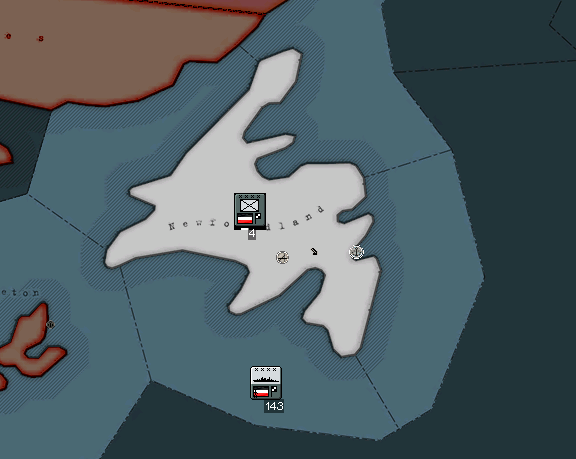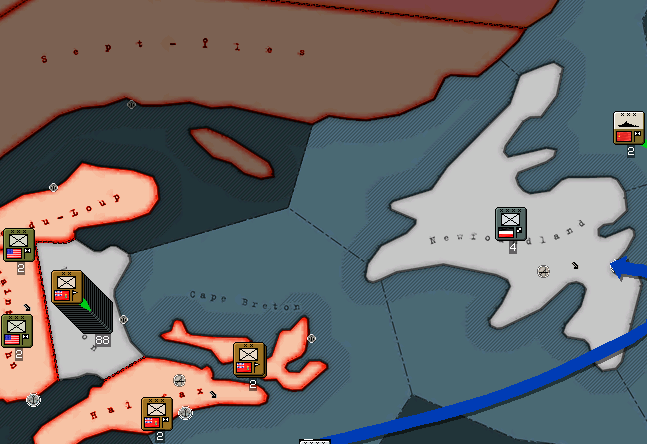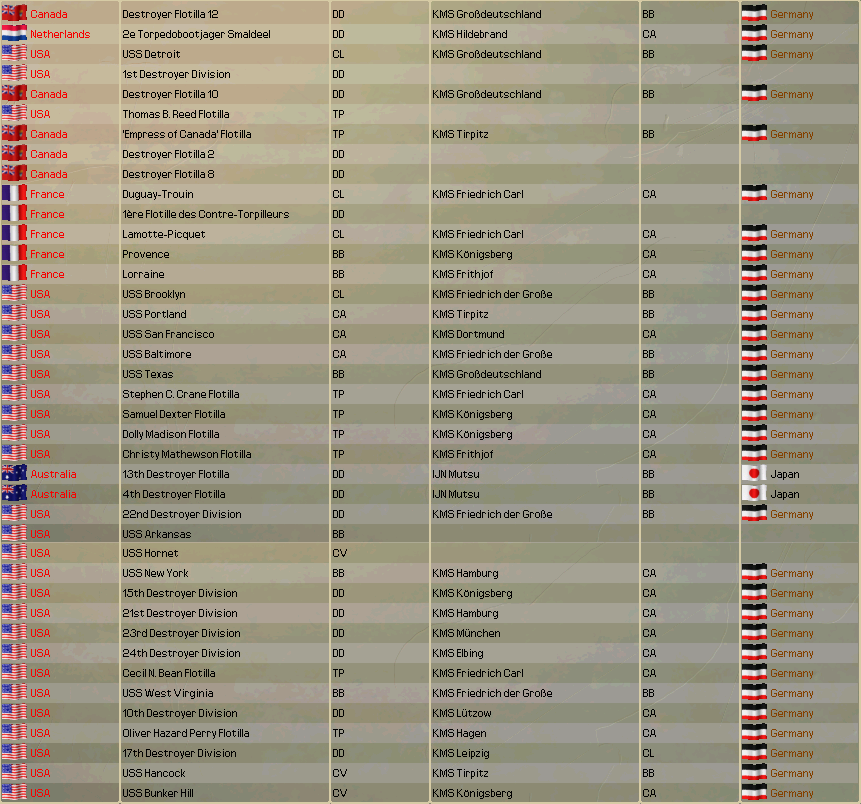SuperBeaverInc.
Groucho
Deep on the jungles of the Congo, the last remnants of the Allied forces in Africa attempted to fight off the Germans. The imporant economical center of Elisabethville had fallen months earlier and German forces continued to advance into the interior. In the west, Rommel took the coast of Gabon and French Congo before advancing into the region of Banana, which was the location of the only seaport in the Belgian Congo. With the fall of the capital of Kinshasa a few weeks later, the Belgian government officially surrendered to Germany.
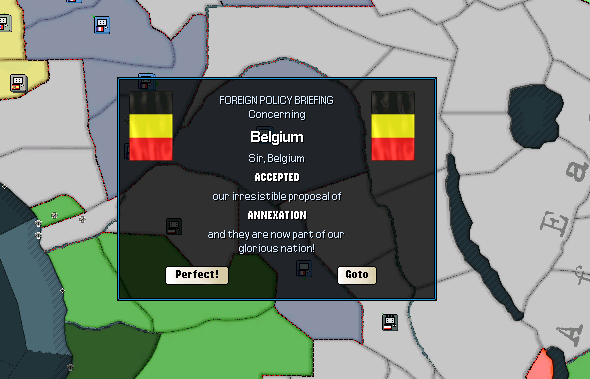
In an attempt to liberate the British Isles from German occupation, the Americans made a landing along the southern coast of England led by Generals MacArthur and Patton. After quickly becoming outnumbered, reinforcements were shipped in from the European mainland. With the help of the Luftwaffe's CAS, American forces were quickly pushed back and forced to make a hasty retreat from Portsmouth.
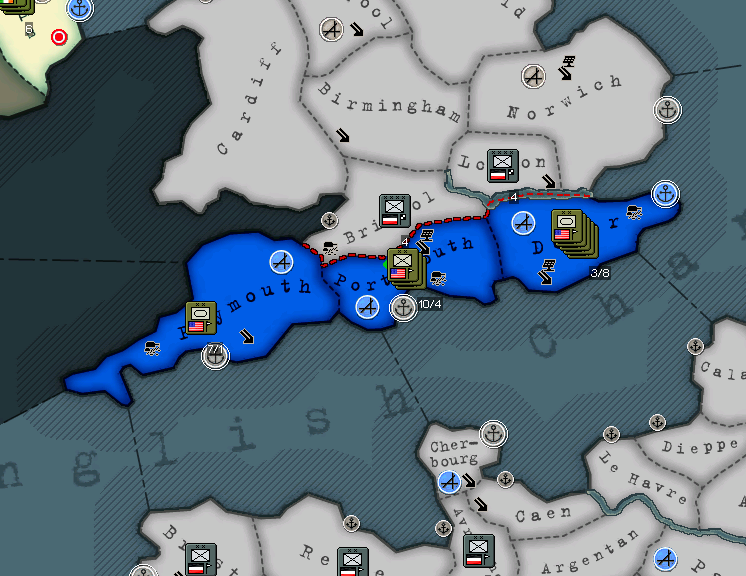
During the American invasion of England, the German Kriegsmarine engaged a French fleet in the North Sea. Unlike previous defeats, the Germans struck a decisive blow to the French navy by sinking the carrier Bearn.

Despite their defeat in England, the American army made another landing in Scotland. Glasgow and Edinburgh were seized and the Scottish government surrendered. Now German forces raced northwards to face off against the new threat in the north. German forces in Scapa Flow marched south into Inverness and the Americans were easily pushed out of Edinburgh and Glasgow, and eventually, out of Scotland itself. The reinforcements that had landed in England were now kept on the island to further help repel Allied invasions.
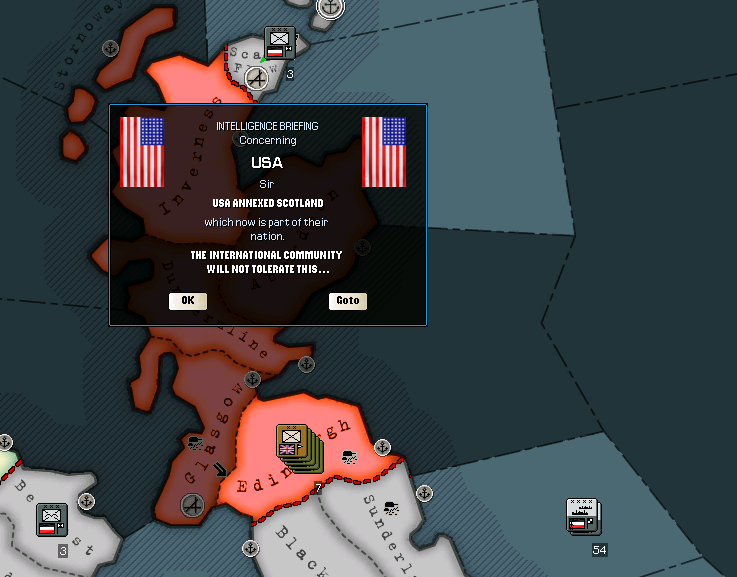
By the summer of 1942, the Finnish government finally agreed to join the Axis. Finnish soldiers would eventually assist the Germans whenever the next invasion of the Soviet Union arrived.
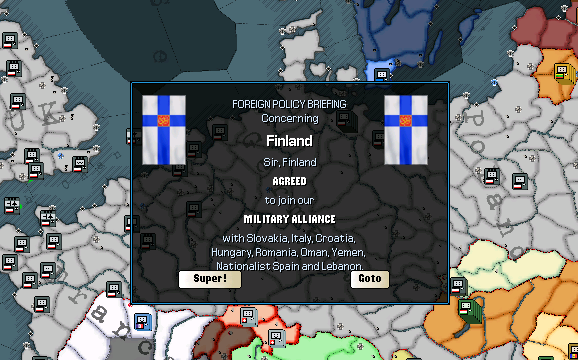
During this time, the German Kriegsmarine had been greatly expanded. The first wave of new ships was being launched. The smaller ships came first, with 14 light cruisers and 14 heavy cruisers. Additionally, a number of transport ships had been made, capable of ferrying soldiers across great distances. The new German Battleships and Carriers were still being worked on and were not expected to be finished for many more months.

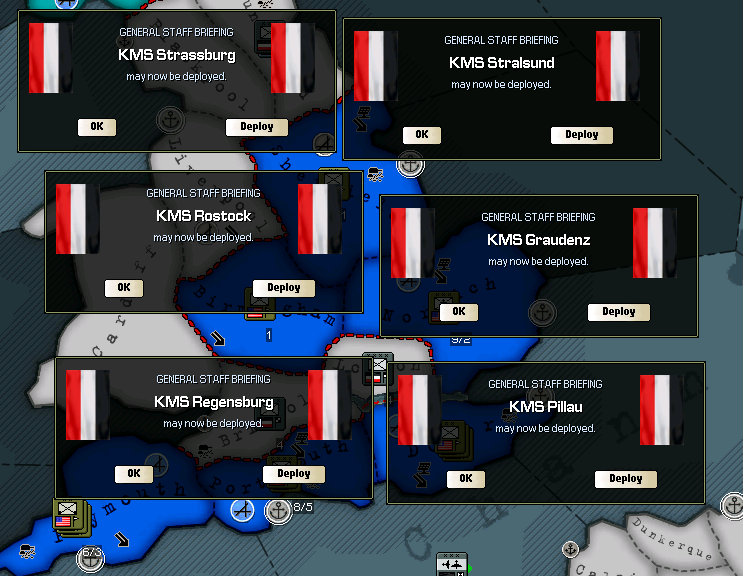
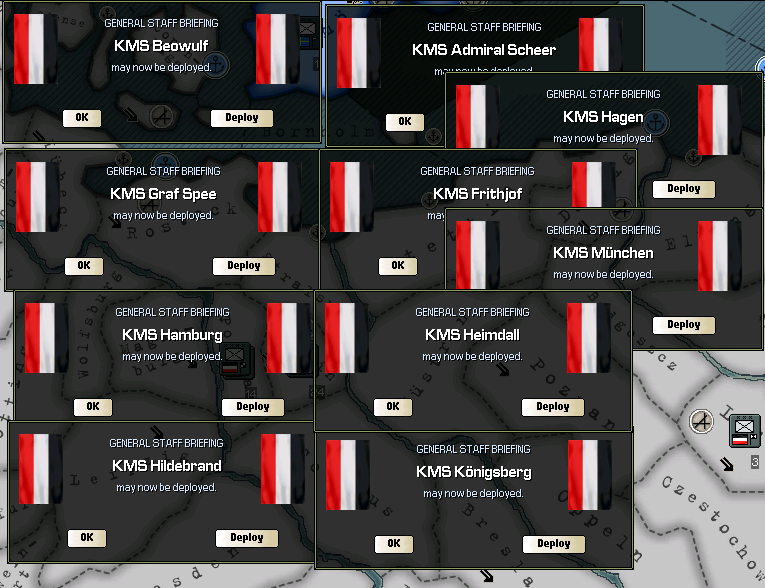


In an attempt to liberate the British Isles from German occupation, the Americans made a landing along the southern coast of England led by Generals MacArthur and Patton. After quickly becoming outnumbered, reinforcements were shipped in from the European mainland. With the help of the Luftwaffe's CAS, American forces were quickly pushed back and forced to make a hasty retreat from Portsmouth.

During the American invasion of England, the German Kriegsmarine engaged a French fleet in the North Sea. Unlike previous defeats, the Germans struck a decisive blow to the French navy by sinking the carrier Bearn.

Despite their defeat in England, the American army made another landing in Scotland. Glasgow and Edinburgh were seized and the Scottish government surrendered. Now German forces raced northwards to face off against the new threat in the north. German forces in Scapa Flow marched south into Inverness and the Americans were easily pushed out of Edinburgh and Glasgow, and eventually, out of Scotland itself. The reinforcements that had landed in England were now kept on the island to further help repel Allied invasions.

By the summer of 1942, the Finnish government finally agreed to join the Axis. Finnish soldiers would eventually assist the Germans whenever the next invasion of the Soviet Union arrived.

During this time, the German Kriegsmarine had been greatly expanded. The first wave of new ships was being launched. The smaller ships came first, with 14 light cruisers and 14 heavy cruisers. Additionally, a number of transport ships had been made, capable of ferrying soldiers across great distances. The new German Battleships and Carriers were still being worked on and were not expected to be finished for many more months.









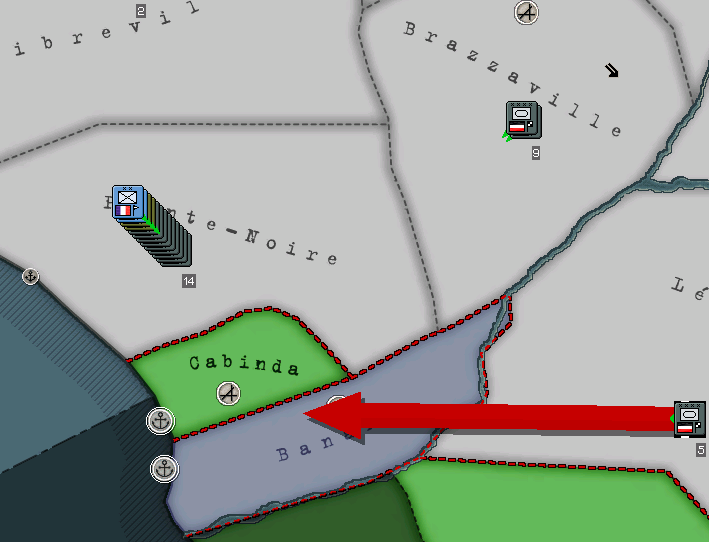

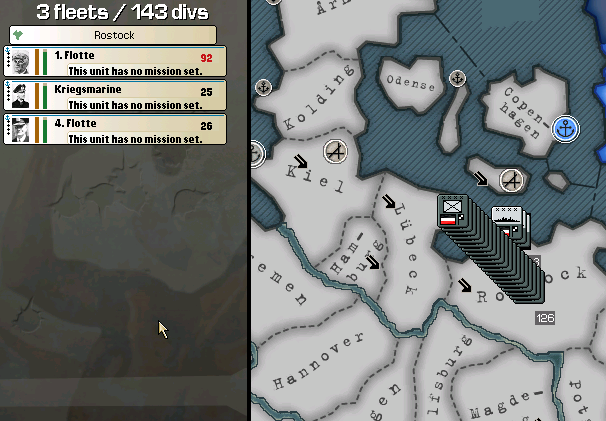
 )
)
